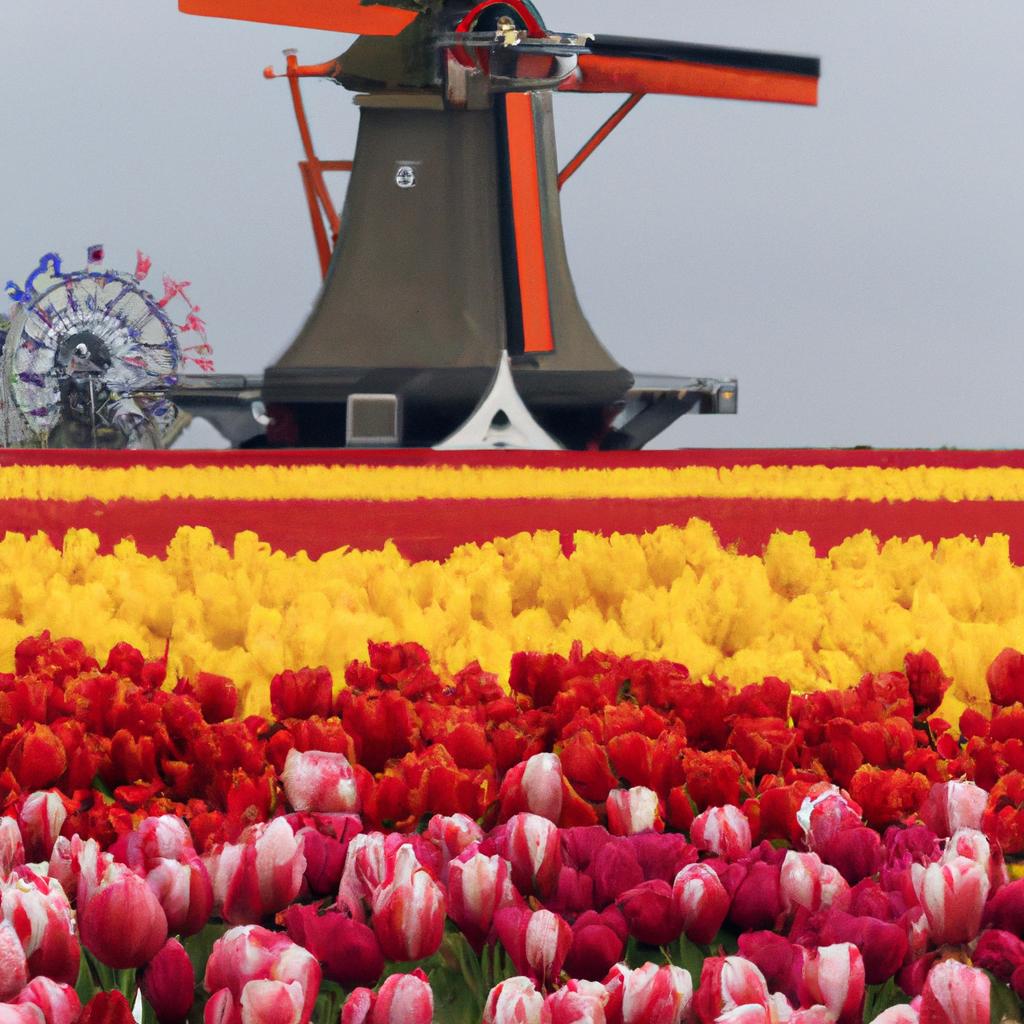Tulips, with their vibrant colors and intricate patterns, have captivated hearts for centuries. These quintessential flowers symbolize love, beauty, and prosperity. Now, let’s embark on a fascinating exploration of the world of tulips, from their rich history to growing tips and the joy of visiting tulip fields.
History of Tulips
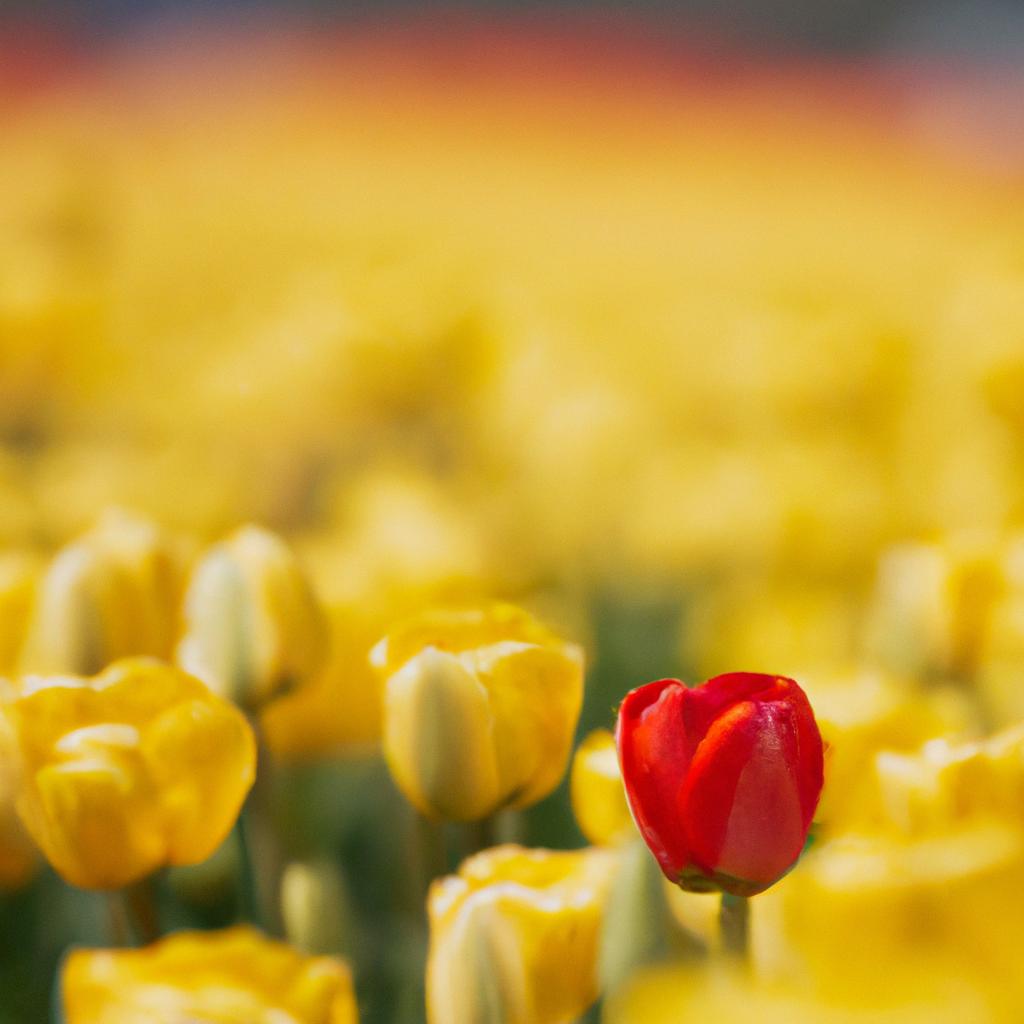
Tulips have an enchanting history that spans centuries. Originating in Central Asia, they were first cultivated in Turkey during the 10th century. But it wasn’t until the Dutch Golden Age in the 17th century that tulips gained immense popularity in the Netherlands.
This fascination led to a phenomenon known as “tulip mania.” Prices for tulip bulbs skyrocketed, and they became a symbol of wealth and status. However, this tulip market eventually crashed, leaving many in financial ruin. Despite this setback, the Dutch persisted in cultivating tulips, and today, the Netherlands is one of the largest tulip producers worldwide.
Growing Tulips
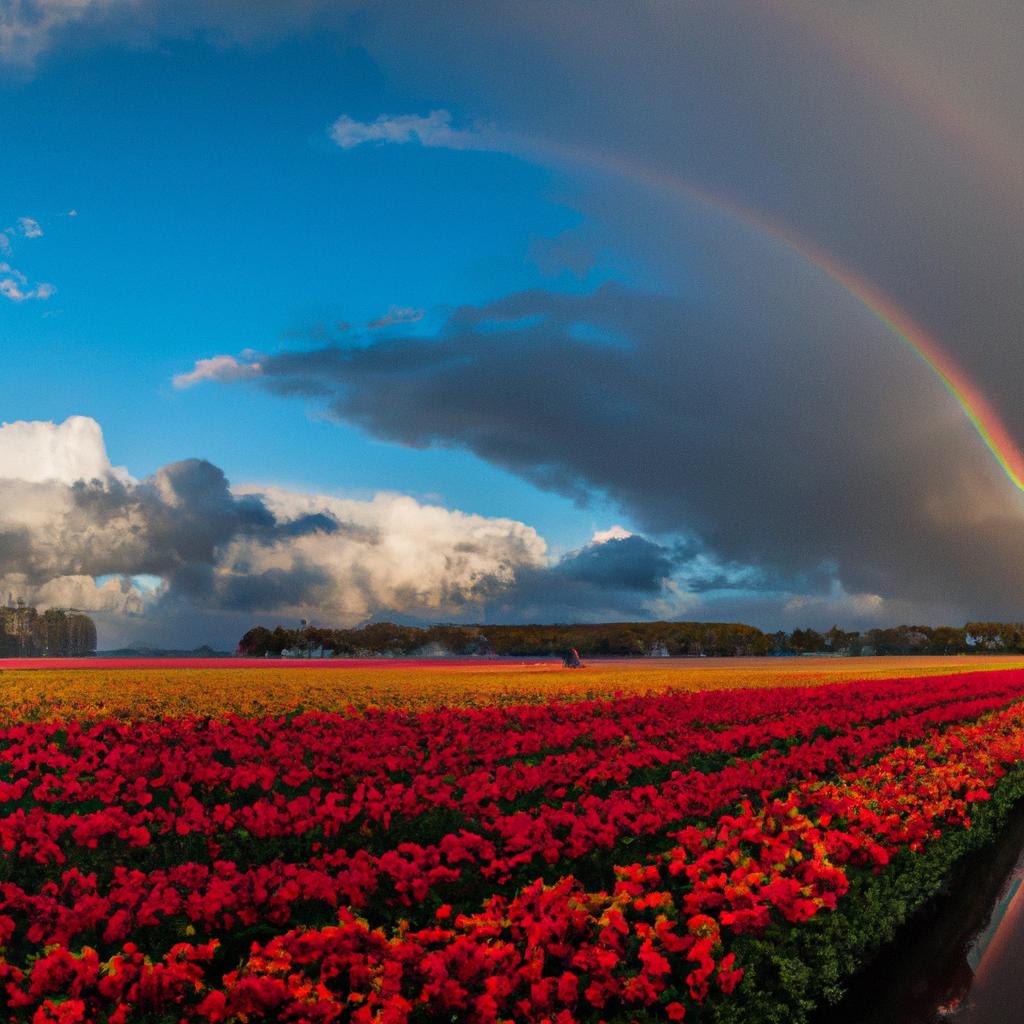
Growing tulips can be an enjoyable and rewarding experience. Here are three key factors to consider when cultivating these beautiful flowers:
Climate and Soil Requirements
Tulips thrive in well-drained soil and prefer a cold winter period to bloom successfully. They flourish in temperate climates with cool springs and summers. In warmer regions, tulips can be grown as annuals, but they may not bloom as profusely.
When choosing a site for planting tulips, opt for full sun exposure. Ensure the soil is well-draining and free of debris that hampers root growth. Incorporating organic matter such as compost or peat moss enhances soil structure and fertility.
Planting and Care
Fall, usually between September and December, is the ideal time to plant tulip bulbs, but timing may vary depending on your climate. Plant the bulbs approximately 6 inches deep, pointed end facing up. For a breathtaking display, plant bulbs in clusters of at least 10.
Caring for tulips is relatively simple. They require regular watering, especially during the growing season, but avoid overwatering, which can lead to root rot. Fertilizing with a balanced fertilizer in spring promotes healthy growth and robust blooms.
Harvesting and Storing
For optimal results, allow tulips to fully bloom on the plant before harvesting. Early mornings, before the sun is at its peak, are the best time to cut tulip flowers. Trim them at the base of the stem and place them in a vase filled with fresh water.
Once the blooms fade, dig up the bulbs and store them until the next season. Let the foliage naturally wither away, as this helps the bulbs store energy. Find a cool, dry place like a garage or basement to store the bulbs until it’s time to replant in the fall.
Types of Tulips
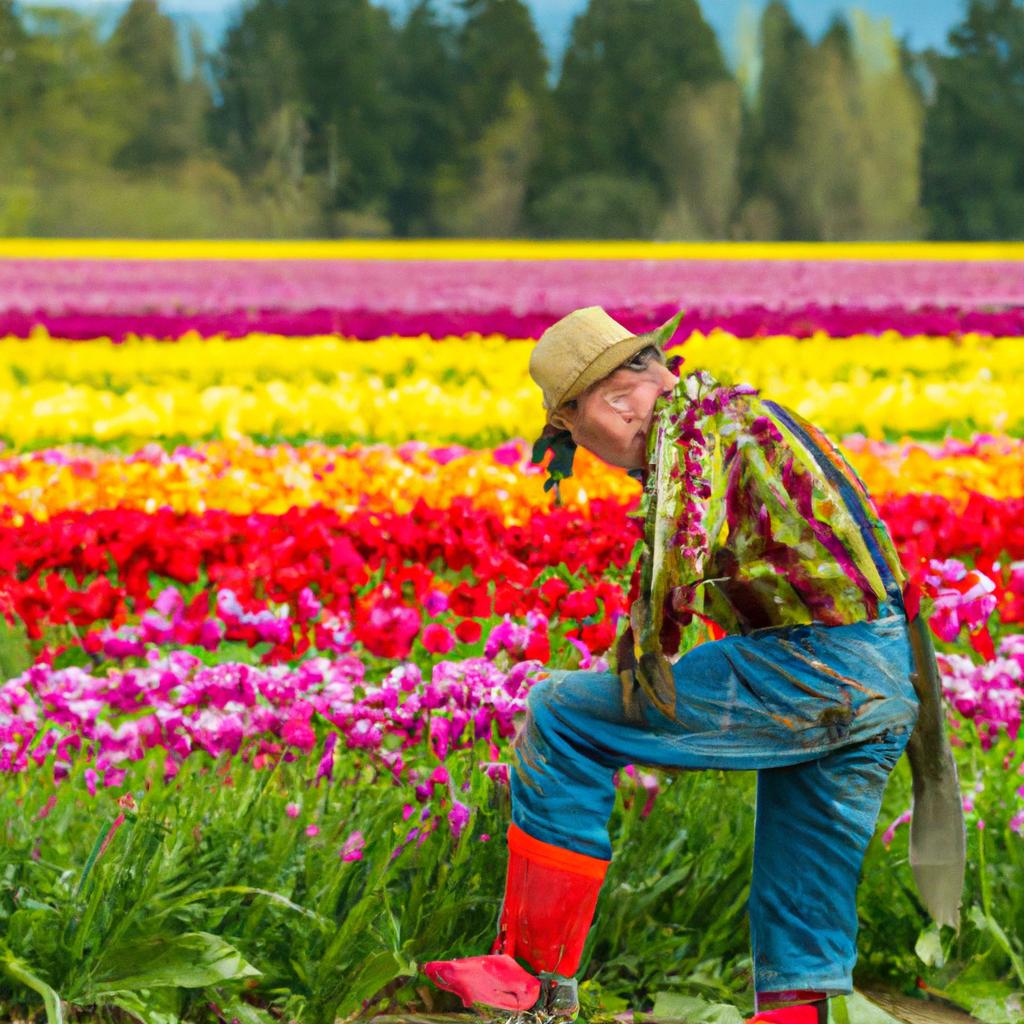
Tulips come in a dazzling array of colors, shapes, and sizes, making them beloved among gardening enthusiasts. Here are some popular types:
Single Early Tulips
These tulips, the early harbingers of spring, boast a classic shape, featuring cup-shaped flowers atop slender stems. Available in red, yellow, pink, and white, they add charm to borders and containers.
Darwin Hybrid Tulips
Resplendent with large, sturdy flowers, Darwin hybrid tulips exhibit an array of colors such as red, pink, orange, yellow, and white. These mid-season bloomers are perfect for cutting, bringing a vivid splash of color to any garden.
Parrot Tulips
With ruffled petals resembling a parrot’s feathers, these tulips enchant with their red, pink, yellow, and orange hues. Parrot tulips add drama and personality to any garden.
Double Late Tulips
Late bloomers with peony-like blossoms, double late tulips exhibit elegance in shades of pink, red, and white. Enhance your garden’s sophistication with these stunning flowers.
Fringed Tulips
Fringed tulips feature delicate, fringed petal edges, offering a whimsical and unique appearance. Embrace the touch of whimsy they bring to your garden with shades of pink, red, and white.
Rembrandt Tulips
Named after the renowned Dutch artist, Rembrandt tulips feature striking striped petals in red, pink, and white. These tulips transform your garden into a masterpiece of artistry.
By selecting different types of tulips, you can craft a garden that reflects your individual style, showcasing the beauty and diversity of these remarkable flowers.
Visiting Tulip Fields

If you’re passionate about tulips, nothing compares to wandering through a field of blooming tulips. Rows upon rows of vibrant colors stretching as far as the eye can see create an awe-inspiring spectacle. Let’s explore the best time to visit tulip fields, renowned tulip fields in the Netherlands, and other countries that boast these natural wonders.
Best Time to Visit
Mid-April to early May is typically the best time to witness tulip fields in full bloom. However, timing may vary depending on weather conditions. It’s always wise to verify the blooming season with local tourist offices or the tulip fields’ websites.
Famous Tulip Fields in the Netherlands
The Netherlands is home to some of the world’s most famous tulip fields. Keukenhof Gardens, the largest flower garden globally, offers a must-visit experience for tulip enthusiasts. With over 7 million flowers, including tulips, daffodils, and hyacinths, Keukenhof Gardens is a floral paradise. Another highlight is the Flower Parade, held in April, featuring elaborately decorated floats adorned with thousands of flowers.
Other notable tulip fields include the Noordoostpolder, encompassing over 2,000 hectares of tulip fields, and the Bollenstreek, also known as the “flower bulb region,” stretching from Haarlem to Leiden.
Other Countries with Tulip Fields
While the Netherlands shines as a prominent tulip destination, other countries boast equally stunning landscapes. Turkey, for instance, houses over 100 specific tulip species, many of which are native to the country. In the United States, the Skagit Valley Tulip Festival in Washington State and the Tulip Time Festival in Holland, Michigan, are popular choices.
Wherever you choose to go, strolling through a field of tulips is an unforgettable experience that will leave you in admiration of nature’s beauty.
Conclusion
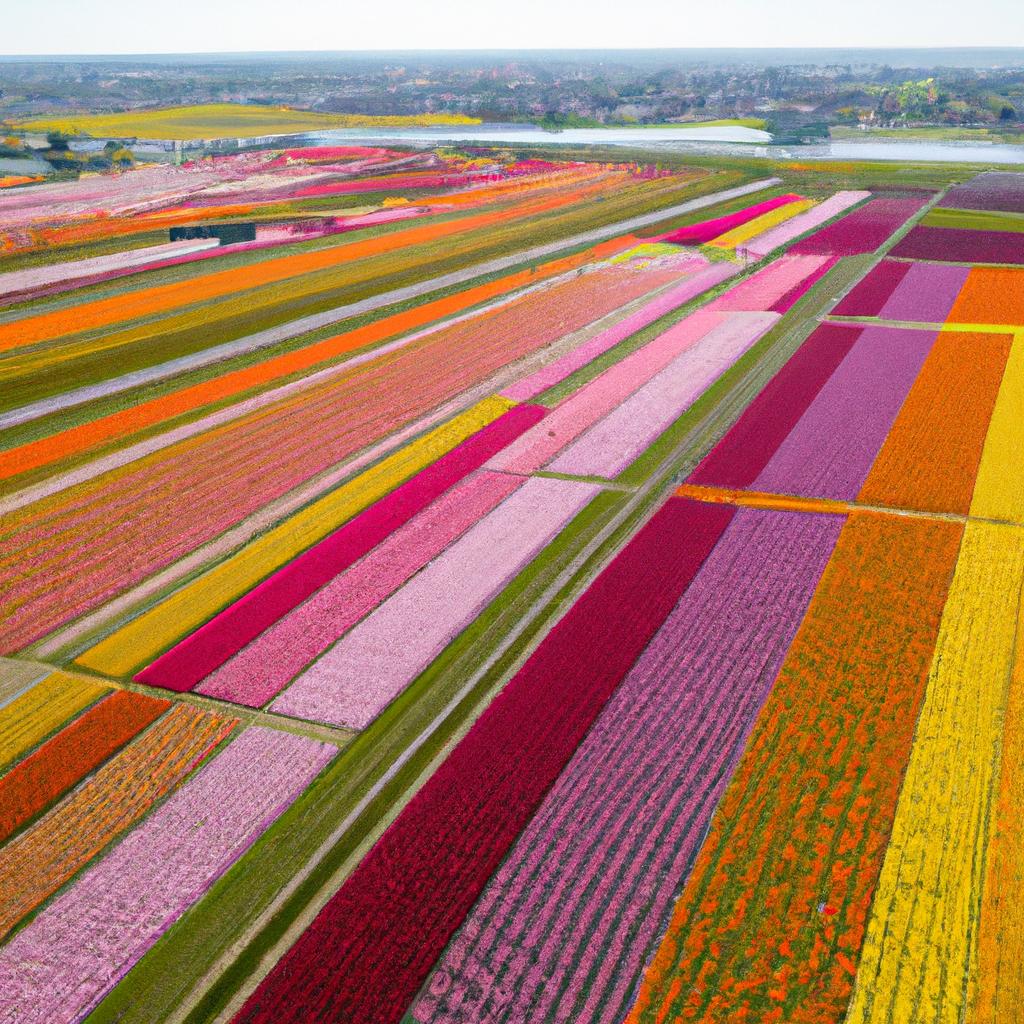
In conclusion, exploring the field of tulips is an extraordinary journey. With their vibrant colors, intricate patterns, and storied past, tulips embody love and beauty. The Netherlands, deeply connected to tulips culturally and economically, stands as a must-visit for any tulip enthusiast.
From delving into the history of tulips to cultivating and caring for them, as well as the joy of visiting tulip fields, this comprehensive guide equips you with all the knowledge required to fully appreciate the beauty and significance of these enchanting flowers.
At TooLacks, we believe nature offers an abundance of treasures, and tulips are just one example. We hope this guide inspires you to explore the magic of tulip fields and embrace the natural beauty that surrounds us.
So, why wait? Grab your gardening gloves or your comfiest shoes and set out to explore the wonders of the tulip fields. The experience will be nothing short of breathtaking!
References and Hyperlinks:
Remember to visit TooLacks for more inspiration and insights!
